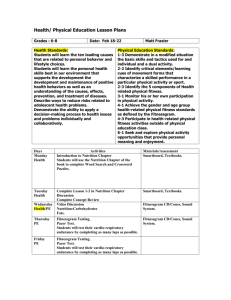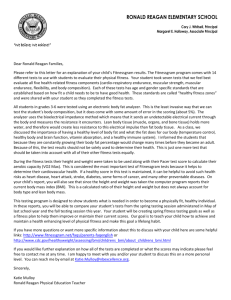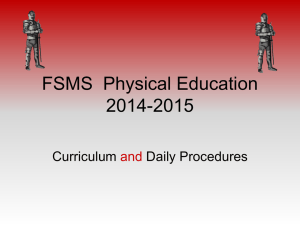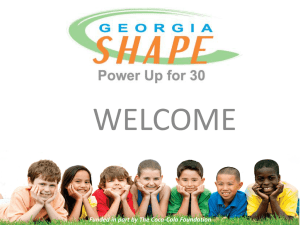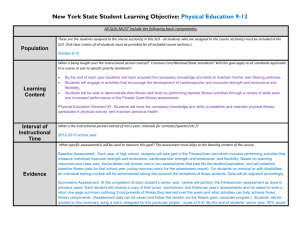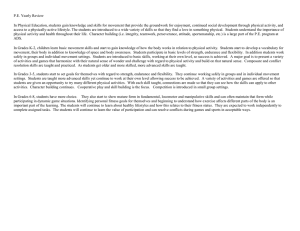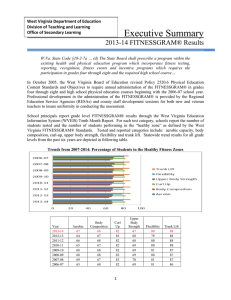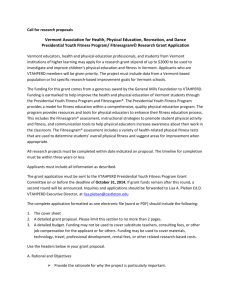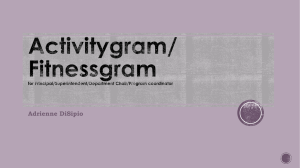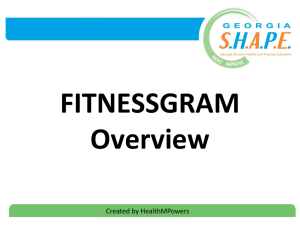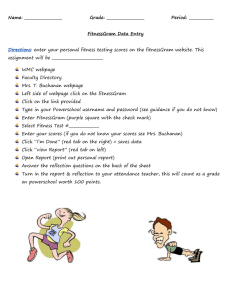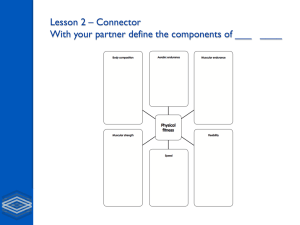Assessment and Tests for Adapted Physical Education
advertisement
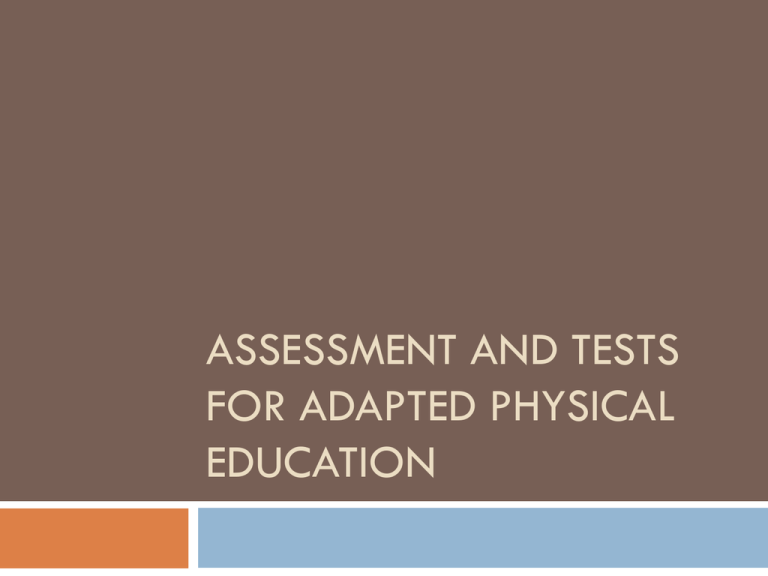
ASSESSMENT AND TESTS FOR ADAPTED PHYSICAL EDUCATION What is Assessment? A process to gather information or data about a student’s skill performance, cognitive understanding, attitude, and interest or behavior needed for learning and interacting with others. A test is the tool you use to gather information. Purpose of Assessment in APE Establish a Present Level of Performance – identify strengths and needs. Program Development - types of modifications Placement – Least Restrictive Environment Measure Achievement – toward goals and objectives. Assessment Types - Published Published with standardized procedures- criteria norms Fitness Brockport Test for Physical Fitness, Adapted Physical Education Assessment Scale (APEAS,) Fitnessgram Skill Development Test for Gross Motor Development, Adapted Physical Education Assessment Scale (APEAS) Activity for Everyone Assessment Types: Teacher Constructed Fitness – Health Related based on one or more specific fitness components. Skill Development – locomotor, manipulative, sport skill, balance, agility, power, speed. Curriculum Based – Skills and knowledge taught in the Physical Education curriculum Authentic –skill or fitness component performed within a game situation, dance, gymnastic sequence or integrated into an activity. Testing Adaptations Okay to adapt. Record adaptation and retest using same conditions. Invalidates standardized test data comparisons. Becomes individualized. What to change? Task – space, size of target, height, time Environment – visual markers, distraction reduction Equipment – color, composition, size, texture Assistance by Peer or Aide – tactile, verbal cues, “Watch Me” demonstration, or partner in test. Developing a test and rubric Determine the test constraints or specifications. Purpose, Skill, Space, # of trials, equipment Determine Performance Levels High, Medium, Low, (Rating Scale) Yes/No (Checklist) Criteria – A description of observable actions that are evident in each performance level Qualitative or Quantitative Qualitative – Describes the body form or technique as the student performs the skill. Quantitative – Describes the skill performance related to how far, how fast, how many (goals, target hits, baskets) in time or trials. Fitnessgram Modifications Pacer – peer buddy with tether, use a flag to signal beep, use a line for focus on path, Other??? One mile walk/run – use distance targets, peer buddy tether, hold stopwatch, Other??? Push Up – tactile prompts for hand position, spot at hips, use an incline mat, use push up mat or mark hand position, modified positions (knees, on front of body. Pull up and flexed arm hang – physical assistance, sit on floor, lean back, and use a stick to pull up to sitting position. Fitnessgram Modifications Curl up – Do without cadence, physical assistance, use visual cues, start up, hold pants, incline mat, hold stick or hands. Trunk Lift – Physical assistance, use visual for focus Sit and Reach – hold for shorter time, use visual tape marks, use physical assistance. Shoulder stretch – physical assistance, use tactile prompt for hand to touch, sit to stabilize body. Develop an Assessment Choose a locomotor movement, manipulative skill, or sport specific skill. Describe the test: What will students do? Be specific Choose qualitative (form) or quantitative (how many, how far, how fast) data to gather. Develop a scoring rubric. Include performance levels (2 or 3) and descriptive criteria for each level. Adaptations if needed for a specific student.



